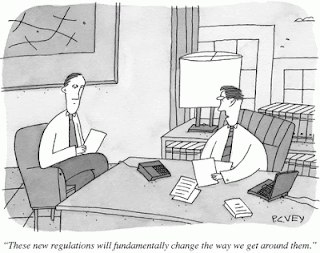M & A Generals,
Be Sure to Attend to Your Rear Guard
(Part 1)
(Part 1)
 |
| Photo by Sgt. 1st Class Kevin Bell |
As M&A
activity in the banking arena begins to heat up and acquisitive banks begin the new year by pursuing potential target banks, it's important to know that it's not all about the science of the
deal. There are two significant strategic risks that, if not
properly attended to, could derail an acquisition – Community Reinvestment Act (CRA) performance and Bank Secrecy Act/Anti-Money Laundering (BSA/AML) compliance. Both are mandatory consideration
factors for regulators under the Bank Merger Act (BMA) for both institutions
involved. While solid due diligence assesses these factors for the
target bank, many times these factors are under-appreciated for the
acquiring bank itself, resulting in the potential for extended application processing times, conditional
approvals, or worse.
In this article, we'll start with the issue of CRA. Part 2, next week, will discuss BSA/AML and some general compliance management issues for both banks that could present setback risk to a deal.
First, CRA will become a higher profile bank merger consideration now that the effects of the financial crisis are wearing off. Regulators apply the CRA tests and standards within something called a Performance Context. One of the factors considered under Performance Context in the CRA regulation is “Institutional capacity and constraints, including the size and financial condition of the bank, the economic climate (national, regional, and local, safety and soundness limitations, and any other factors that significantly affect the bank's ability to provide lending, investments, or services in its assessment area(s)."
Let me be frank, CRA examinations during the economic downturn have been giving significant consideration to performance context, due to the dour economic climate, the stressed financial condition of most banks, and other factors impacting the bank's ability to provide lending, investments, and services in their assessment areas. Now that the economy is turning up, performance context is changing as we speak and the CRA performance context leeway, provided by regulators in CRA performance evaluations, is now evaporating.
In this article, we'll start with the issue of CRA. Part 2, next week, will discuss BSA/AML and some general compliance management issues for both banks that could present setback risk to a deal.
First, CRA will become a higher profile bank merger consideration now that the effects of the financial crisis are wearing off. Regulators apply the CRA tests and standards within something called a Performance Context. One of the factors considered under Performance Context in the CRA regulation is “Institutional capacity and constraints, including the size and financial condition of the bank, the economic climate (national, regional, and local, safety and soundness limitations, and any other factors that significantly affect the bank's ability to provide lending, investments, or services in its assessment area(s)."
Let me be frank, CRA examinations during the economic downturn have been giving significant consideration to performance context, due to the dour economic climate, the stressed financial condition of most banks, and other factors impacting the bank's ability to provide lending, investments, and services in their assessment areas. Now that the economy is turning up, performance context is changing as we speak and the CRA performance context leeway, provided by regulators in CRA performance evaluations, is now evaporating.
In addition to the challenges presented by evolving changes in CRA Performance Context, the extended examination cycles for CRA examinations can present an additional issue. Most banks are on a
3-year CRA examination cycle, with adjustments to the cycle for banks
with assets $250 million or less – 4 years if the present CRA
rating is satisfactory – 5 years if outstanding. These extended
time frames between CRA examinations brings in the possibility that
someone protesting the merger application will contend that the examination
results are “stale” and do not fairly represent the current CRA
performance of the banks involved.
Be prepared to deal with that for both banks in the transaction. Particularly in those higher-profile acquisitions which may tend to attract significant public attention. My recommendation is that you not only tell your bank's story, but control your bank's story. That doesn't mean distorting it, but it does mean responding immediately to all compliments and complaints, so that you are framing and defining the context of your bank's CRA performance, not someone else. And all that needs to be documented in the CRA public file.
Make sure you have a fairly recent written CRA self-assessment, that is supported by specific current data on lending, investment, and service efforts (including any changes in assessment areas and performance context). That self-assessment should also include a fair lending self-assessment as well as any planned CRA performance initiatives. Don't forget to include staff training efforts and written feedback from community organizations or public officials that the bank may be working with.
Make sure you have a fairly recent written CRA self-assessment, that is supported by specific current data on lending, investment, and service efforts (including any changes in assessment areas and performance context). That self-assessment should also include a fair lending self-assessment as well as any planned CRA performance initiatives. Don't forget to include staff training efforts and written feedback from community organizations or public officials that the bank may be working with.
In compliance management, the old saw about "a good offense is the best defense" applies. Diligently attending to compliance responsibilities can be an insurance policy. Many bankers disparage compliance costs as non-revenue producing expenditures, forgetting that they can help avoid serious out-year expenditures for reimbursement and restitution, civil money penalties, legal fees, reputation damage to the bank and the costs of lost opportunities.

